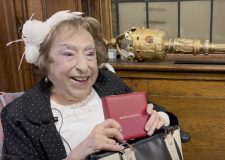The big issue: A day to remember
Next Monday is Holocaust Memorial Day. Oliver Yule-Smith and Harriet Barsham from Brighton College share their impressions of a visit to Auschwitz
How do you put one of the most notorious cases of human genocide into words? How do you begin to describe the destruction of entire communities? All those who visit Auschwitz, as we were able to do, return with a sense of responsibility to tell this story to all those who are unable to see for themselves the horrors that the Nazis inflicted on Jews, Soviet prisoners of war, gay people, Jehovah’s Witnesses and those of African descent. We must tell this story for those who no longer can.
“We must tell this story for those who no longer can”
The Holocaust Education Project’s Lessons from Auschwitz project involves pupils visiting the camp for a single day. Rabbi Marcus, the organiser, planned it with the intention that one single day in the Nazi extermination camp would be such a huge shock to the system that it would not give you time to adjust or “acclimatise”. This was certainly the case for us after arriving on a wintry, melancholy morning in Oswiecim, Poland. (The town of Auschwitz has been known as Oswiecim since 1945.)
Before being taken to Auschwitz 1 we had a lecture from Rabbi Marcus about pre-war Jewish life. He stressed the vibrancy and vivacity that was evident of Jews in Oswiecim. We also went to the site of the ruins of the Great Synagogue, so unparalleled in its beauty and magnificence that Kaiser Wilhelm visited in person to behold its grandeur. Before the war, Jews made up 58 per cent of Oswiecim. Now not a single Jewish person lives there.
Next, we took the coach to Auschwitz 1, which was the first extermination site to be built. It was originally a barracks for the Polish Army but under occupation it was transformed into something much more sinister. As we toured around the stone barracks we saw exhibitions containing glass display with all the possessions left behind. These ranged from luggage cases, toiletries, shoes and even human hair shaved from prisoners for use in textile factories in Germany.
However, what was most upsetting was seeing all of the gas canisters pressed compactly into the glass exhibition – Hitler’s solution to the “Jewish question”. A memory that will remain with us was the moment when we ourselves walked through one of the few surviving extermination chambers. Seeing the slots in the ceiling where Cyclone-B was pumped through, swiftly killing the occupants of the room, sometimes as many as a thousand at a time, was particularly painful. At the corner of the room, scratch marks were etched into solid brick.
Next, we went on to the infamous Auschwitz 2 or Auschwitz-Birkenau. If possible, the conditions in which the prisoners were kept were even more shocking. They were housed in what had been the stables for the horses of the Germans, part of the Nazis’ attempt to reduce these human beings to the status of animals.
Walking down the tracks where the trains terminated, sending a majority of the passengers immediately on to their deaths, gave us a sobering sense of the loss of so many innocent people who were unlucky enough to be born into a certain faith at a certain time.
The final building we saw was the registration building where the Nazis would decide whether Jews would be sent to the extermination chamber or the concentration camp, one of the few buildings not burnt down by the Nazis upon evacuation.
In this building we saw an object that most powerfully summarised the feelings of the Jews who arrived at the camp and the Holocaust as a whole, a set of house keys. An object that everyone has and that everyone would need in order to return to the home. This was, sadly, an item that most of the inmates of the camp would have no further need for.n





















